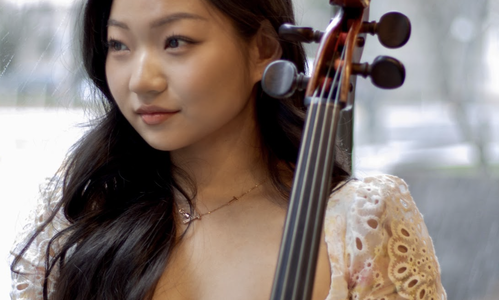Ethea Trio Performs Haydn & Ravel
Details
Ayoun Alexandra Kim full profile / Piano Trio / 3 musicians
Other players: Shintaro Taneda, Jon Lee
Full program notes
Program:
Joseph Haydn – Piano Trio in E♭ Major, Hob. XV:30 (17")
i. Allegro moderato
ii. Andante con moto
iii. Presto
Maurice Ravel – Piano Trio in A Minor (29")
i. Modéré
ii. Pantoum (Assez vif)
iii. Passacaille (Très large)
iv. Final (Animé)
In this program, Trio Ethea explores two vastly different sound worlds—spanning over a century of musical evolution—with piano trios by Joseph Haydn and Maurice Ravel. Though stylistically distinct, both works are united by their emotional richness, inventive textures, and deep sense of dialogue between the instruments.
We begin with Haydn’s Piano Trio in E♭ Major, Hob. XV:30, a work full of charm, wit, and structural elegance. Written in 1796, this trio showcases Haydn’s gift for clarity and playful inventiveness. The first movement opens with a graceful theme, soon followed by surprising turns and rhythmic tricks. The second movement is an expressive and lyrical Andante, offering a glimpse of Haydn’s more introspective side. The final movement is a lively Hungarian-style rondo, bursting with energy and good humor. We were drawn to this piece for its balance of refinement and joy—it’s a masterclass in conversational chamber music that feels both intimate and timeless.
In contrast, Ravel’s Piano Trio in A Minor, written in 1914 on the brink of World War I, is a deeply evocative and emotionally charged work. Ravel blends Basque dance rhythms, modal harmonies, and lush textures to create a unique sonic palette. The opening movement is fluid and lyrical, inspired by the zortziko, a Basque folk dance. The second movement—a scherzo titled Pantoum—borrows its form from Malaysian poetry, layering contrasting ideas with rhythmic complexity. The third movement is a solemn passacaglia, gradually building in intensity, while the final movement bursts forth with passion and urgency. For us, performing this trio is like stepping into a vivid dreamscape—its colors and emotional depth are endlessly inspiring.
Together, these two works showcase the piano trio as a form of endless possibility: capable of elegance, intimacy, playfulness, and profound expression. We hope this program offers you both joy and reflection, and invites you into the shared heartbeat of this incredible music.
Other programs from this ensemble
Ethea Trio Performs Haydn & Ravel
- Musician profile: Ayoun Alexandra Kim
-
Instruments: Piano Trio
- Musicians: Ayoun Alexandra Kim, Shintaro Taneda, Jon Lee

 Continue with Facebook
Continue with Facebook
 Continue with Google
Continue with Google
 Continue with Apple
Continue with Apple
